The son of Mercedes (Bellido) and Pedro Gregorio del Torro Gomez, Manuel del Toro was born August 3, 1927 in Brooklyn, New York. When he was a baby, his parents brought him to Puerto Rico. Manuel, his older sister Mercedes and younger brother Jorge grew up in the municipality of Mayagüez, where his father worked as a house carpenter.
Discover The History Of Figure Skating!
Manuel del Toro, The Puerto Rican Patinador
The son of Mercedes (Bellido) and Pedro Gregorio del Torro Gomez, Manuel del Toro was born August 3, 1927 in Brooklyn, New York. When he was a baby, his parents brought him to Puerto Rico. Manuel, his older sister Mercedes and younger brother Jorge grew up in the municipality of Mayagüez, where his father worked as a house carpenter.
The 1952 U.S. Figure Skating Championships
King George VI passed away and Princess Elizabeth was proclaimed the Queen of England. The United States senate ratified a peace treaty with Japan. Harry S. Truman was President, Brylcreem and beehives were all the rage, a movie ticket was forty cents and Kay Starr's "Wheel Of Fortune" topped the music charts.
The event was the grand finale of a long and arduous season. Most of the top skaters had already competed at the U.S. Olympic Tryouts just before Christmas in Indianapolis and at the Winter Olympic Games and World Championships, held in Oslo and Paris. Though the competition was serious business, the mild weather coupled with the popular outdoor swimming pool on the Lake Terrace of the Broadmoor Hotel provided more of a vacation vibe than anything. How did things play out on the ice? Let's take a look back!
THE NOVICE AND JUNIOR EVENTS
Los Angeles' Georgiana Sutton lead the way after the school figures in the novice women's event, but was overtaken in the free by Mary Ann Dorsey. Fourteen year old Dorsey - 'Lulu' to friends - was a ninth grade student in Minneapolis who enjoyed knitting and playing ping pong. Another ninth grade student, thirteen year old Tim Brown of Baltimore, was the unanimous winner in the novice men's event. He had only been skating for three years at that point and carried around a wishbone for good luck.
The winners of the junior pairs title were Sharon Coate and Richard 'Buddy' Bromley, teenagers from the state of Washington. Coate and Bromley were competitors in singles, pairs and dance and represented two different clubs - she Seattle; he the Lakewood Winter Club in Tacoma. He was the editor-in-chief of his high school newspaper; she collected dolls from around the world. Finishing just off the podium in fourth were Carol Ann Peters and Danny Ryan, who skated 'double duty' in the Gold (senior) Dance event.
The Silver (junior) Dance event was won by a husband and wife team from Buffalo, Elizabeth and Roger Chambers. They had both been skating for around ten years; competitively for four. She was a mother of three and he worked in the sales department of Maxson Cadillac. Both were keen amateur photographers and were quite tall for dancers at the time. She was five foot six; he six foot one.
Though she had just won the Eastern title in the senior category, twelve year old Carol Heiss competed as a junior in Colorado Springs. She represented the Junior Skating Club of New York and came behind from third in figures to convincingly win the junior women's event. In doing so, she added her name to a long list of U.S. women who'd claim national titles as both a junior and senior... Tenley Albright, Gretchen Van Zandt Merrill, Yvonne Sherman, Beatrix Loughran and Maribel Vinson among them. In her 2012 interview with Allison Manley on The Manleywoman SkateCast, Heiss recalled, "It was my first time dealing with the altitude. And I was third in school figures, and I remember thinking that I would have to work hard on them to get better. And I remember walking in and slamming the big arena doors on my finger. Even today it’s a little crooked, so I must have broken it."
When fourteen year old Ronnie Robertson, a ninth grade student at a progressive school in Colorado Springs, won the junior men's school figures, some thought his road to gold would be a cakewalk. It was anything but. He faced a serious challenge in the free skate from Cleveland's David Jenkins and California's Armando Rodriguez. When the marks were tallied, three judges had Robertson first, one voted for Rodriguez and another gave his first place ordinal to Philadelphia's William Lemmon Jr. - who ended up only seventh overall. The red-haired Robertson took the gold, followed by Rodriguez and Jenkins... and everyone agreed that the future of men's figure skating in America looked very bright indeed.
THE PAIRS COMPETITION
Only two pairs competed for the Henry Wainwright Howe Memorial Trophy in the senior pairs event. To no one's surprise, Karol and Peter Kennedy easily defeated Minnesota's Janet Gerhauser and John Nightingale to win their fifth and final U.S. title. Though there was no controversy in hthe judging - all five judges had the Kennedy's first - but behind the scenes there was a very different story going on.
The February 28, 1952 issue of "The Seattle Daily Times" reported, "Dr. Michael Kennedy of Seattle and his son were involved in a fist fight with a French news cameraman tonight at the World Figure Skating Championship and were separated by police. The incident came as Peter and his sister, Karol, had left the ice after finishing their pair-skating routine. As they left the ice, Karol stepped to the side of the rink and sat down to catch her breath. Dr. Kennedy said he asked the photographer not to take her picture because she was crying, but the picture was made anyway. In the melee that followed, the doctor's glasses were broken and the cameraman received a bloody nose. The police stepped in. The Kennedys hurried from the Sports Palace by a rear door and were taken to their hotel. Peter and Karol didn't wait to change to their street clothes."
In the months that followed, the ISU had its Congress and the USFSA its Annual General Meeting. It came out that in addition to the incident in Paris, Karol and Peter had also skated an exhibition without a proper sanction in Garmisch-Partenkirchen following the World Championships. The incident in question was a performance for American G.I.'s during a Bavarian skating competition, arranged by the U.S. military. Their father believed the German sponsors had applied for a sanction from the ISU, but they hadn't. Newspapers reported the exhibition as being the reason for their suspension, but the USFSA and ISU also acknowledged the incident in Paris.
Though Karol and Peter's father had told the press that they intended to skate professionally, after the suspension Peter applied to his local draft board for induction to go fight in the Korean War. He was rejected because he had asthma. He had previously been given a deferment because he was a student at the University of Washington. He got a job at the First National Bank.
THE ICE DANCE COMPETITION
Six couples competed for the Harry E. Radix Trophy in Gold (senior) Dance in Colorado Springs, with two pairings eliminated after the initial round. The unanimous winners, to the surprise of few, were Baltimore's Lois Waring and Michael McGean. They had won the event previously in 1950 but opted not to compete the year prior and were also victors at the ISU's International Ice Dance Competition at the 1950 World Championships in London. Their free dance (rather daringly) included a couple of very small lifts.
THE WOMEN'S COMPETITION
After losing to Sonya Klopfer at the U.S. Olympic Trials in Indianapolis, sixteen year old Manter Hall School student Tenley Albright of Boston had claimed the silver medal at the Winter Olympic Games in Oslo and withdrawn from the World Championships in Paris due to a serious bronchial infection. Sufficiently recovered to compete in Colorado Springs, Albright easily won her first of five consecutive U.S. titles, leading the field of six from start to finish. She also earned the Oscar L. Richard Trophy, awarded to the most artistic 'lady' skater.
THE MEN'S COMPETITION
"A superbly built athlete of immense strength, as lithe as a panther, he is concerned with his figure skating, as an endeavour to reach even greater heights. A terrific worker, he trains has few athletes have ever trained before and anyone who has seen him skate must surely realize how necessary this hard training is in order to attain such exceptional brilliance and to perform his amazing programme". These were the words of famed British skater, judge and writer T.D. Richardson, describing two time Olympic Gold Medallist, five time World Champion and three time North American Champion Dick Button. It was a delight to the skating community that Button gave "perhaps the greatest free style exhibition of his career" (according to Mrs. R. Sanders Miller in "Skating" magazine) to win his seventh consecutive U.S. title in Colorado Springs. In his final competition as an amateur, Button put the boots to his competition in the figures and landed a triple loop and three double Axels to earn unanimous first place votes from every judge and the Oscar L. Richard Trophy for the most artistic performance by a male skater. Jimmy Grogan, the winner of the U.S. Olympic Trials (which Button hadn't competed in) took the silver, ahead of Hayes Alan Jenkins, Dudley Richards and Hugh Graham. The standard of skating was so high that any other year, any of the five competitors could have easily won.
Skate Guard is a blog dedicated to preserving the rich, colourful and fascinating history of figure skating. Over ten years, the blog has featured over a thousand free articles covering all aspects of the sport's history, as well as four compelling in-depth features. To read the latest articles, follow the blog on Facebook, Twitter, Pinterest and YouTube. If you enjoy Skate Guard, please show your support for this archive by ordering a copy of the figure skating reference books "The Almanac of Canadian Figure Skating", "Technical Merit: A History of Figure Skating Jumps" and "A Bibliography of Figure Skating": https://skateguard1.blogspot.com/p/buy-book.html.
The Whiz Of White Lodge: The Winsome Thackeray Story
The daughter of James and Esther (Anderson) Thackeray, Esther Winsome Lorraine Thackeray was born in 1908 in Melbourne, Australia. Winsome and her three brothers William, Robert and James grew up wanting for very little at the family's large home 'White Lodge' on Marine Parade in St. Kilda.
Winsome became a member of East St. Kilda junior auxiliary of the Women's Hospital and earned a cooking diploma after taking a three year course in Domestic Arts at the Emily McPherson College of Domestic Economy. In 1927, at the age of nineteen, she was finally able to achieve some semblance of control over her destiny. She showed up on the doorstep of the famed Melbourne Glaciarium and fell madly in love with figure skating. By 1930, she was skating every single day and had passed her third class test. In an interview with Beatrice Fischer in the August 21, 1930 issue of "Table Talk" she explained, "I just couldn't bear to let anything beat me! And watching those more fortunate individuals who could cut all kinds of patterns on the ice with such apparent ease, only goaded me on to do to the same. I found, that once on the ice, it was not so very difficult to make a beginning, be it ever so bad, and then after each trial I noticed an improvement, which added to my zest and gave me an exhilirating sense of power. It is a marvellous feeling in any form of activity, but particularly with skating, when it becomes quite intoxicating."
Finding an unlikely partner in Cyril MacGillicuddy, a doctor almost twenty years her senior, Winsome entered every pairs, Waltzing and singles skating competition imaginable in Australia in the late twenties and early thirties... and placed in the top three in almost every one. Contrasting with her curly fair hair, she always skated in all black and wore a short dress with a flared skirt. She added a hat and stockings for exhibitions. In 1933 - her most successful year - she won the national women's and pairs titles in Sydney and the Victorian women's, pairs and waltzing titles in Melbourne, setting a record for the most Australian skating titles held by any person at the same time. In total, she won two Australian women and pairs titles and one Australian Waltzing title. In 1935, she again made history by becoming the first woman in Victoria to pass the first class skating test. Quoted in the September 24, 1935 issue of "The Argus", she explained, "I love skating and it is a great joy to me to be able to be on the ice nearly every day." What made Winsome's achievements all the more heartening was the fact that at the height of her success, she was grieving the death of her father.
Though she retired from competitive figure skating in 1935, Winsome remained a fixture at the Melbourne Glaciarium, helping to organize charity skating galas for the Women's Hospital and performing in carnivals as part of the 'Glaciarium Eight' (a team of two fours) with Edith Adams, Alison Lyons, Gwen Chambers, Graham Hobbs, Nate Walley, Ron Chambers and Jack Gordon. Though coverage of figure skating competitions was scant in the Australian press at the time, numerous mentions were made of Winsome's elegance and grace on the ice. She told Beatrice Fischer, "I really think my dancing helped me tremendously with skating. It is quite noticeable that those who have never danced make very much slower progress on the ice, than others who have. Dancing seems to instil a certain balance and poise, which is so necessary to possess in order to become a graceful skater."
By the time World War II started, Winsome had hung up her skates. She returned to the life her mother had charted out for her - volunteer work, volunteer work and more volunteer work. She worked tirelessly with the St. Kilda League Of Helpers and the Mission of St. James and St. John and lived a relatively quiet life. In 1947, her partner and friend Dr. MacGillicuddy passed away and on Good Friday in 1963, the long vacant Melbourne Glaciarium burned to the ground. Winsome never married and lived at 'White Lodge' her entire life, dying in relative obscurity at the age of sixty-eight on March 26, 1976... exactly forty years after she made first made Australian figure skating history.
Skate Guard is a blog dedicated to preserving the rich, colourful and fascinating history of figure skating. Over ten years, the blog has featured over a thousand free articles covering all aspects of the sport's history, as well as four compelling in-depth features. To read the latest articles, follow the blog on Facebook, Twitter, Pinterest and YouTube. If you enjoy Skate Guard, please show your support for this archive by ordering a copy of the figure skating reference books "The Almanac of Canadian Figure Skating", "Technical Merit: A History of Figure Skating Jumps" and "A Bibliography of Figure Skating": https://skateguard1.blogspot.com/p/buy-book.html.
A Touch Of Triskaidekaphobia
|
Year |
Men |
Women |
Pairs |
Ice Dance |
|
1928 |
Montgomery Wilson |
Edel Randem |
Kathleen Lovett and A. Proctor Burman |
N/A |
|
1932 |
(none) |
Elizabeth Fisher |
(none) |
N/A |
|
1936 |
Erle Reiter |
Angela Anderes |
Irina Timcic and Alfred Eisenbeisser-Ferraru |
N/A |
|
1948 |
Zdeněk Fikar |
Dagmar Lerchová |
Grazia Barcellona and Carlo Fassi |
N/A |
|
1952 |
Kalle Tuulos |
Vevi Smith |
Bjørg Skjælaaen and Reidar Børjeson |
N/A |
|
1956 |
Allan Ganter |
Joan Haanappel |
(none) |
N/A |
|
1960 |
Peter Jonas |
Dany Rigoulot |
Marcelle Matthews and Gwyn Jones |
N/A |
|
1964 |
Charles Snelling |
Kumiko Okawa |
Margit Senf and Peter Göbel |
N/A |
|
1968 |
Philippe Pélissier |
Linda Carbonetto |
JoJo Starbuck and Ken Shelley |
N/A |
|
1972 |
Didier Gailhaguet |
Cathy Lee Irwin |
Florence Cahn and Jean-Roland Racle |
N/A |
|
1976 |
Pekka Leskinen |
Emi Watanabe |
Ingrid Spieglová and Alan Spiegl |
Susan Carscallen and Eric Gillies |
|
1980 |
Rudi Cerne |
Karin Riediger |
(none) |
(none) |
|
1984 |
Mark Cockerell |
Elizabeth Manley |
Claudia Massari and Leonardo Azzola |
Jindra Holá andd Karol Foltán |
|
1988 |
Petr Barna |
Charlene Wong |
Lisa and Neil Cushley |
Sharon Jones and Paul Askham |
|
1992 |
Masakazu Kagiyama |
Patricia Neske |
Danielle and Stephen Carr |
Anna Croci and Luca Mantovani |
|
1994 |
Michael Tyllesen |
Lenka Kulovaná |
Anuschka Gläser and Axel Rauschenbach |
Aliki Stergiadu and Juris Razgulajevs |
|
1998 |
Szabolcs Vidrai |
Shizuka Arakawa |
Danielle McGrath and Stephen Carr |
Kateřina Mrázová and Martin Šimeček |
|
2002 |
Ivan Dinev |
Sarah Meier |
Tiffany Scott and Philip Dulebohn |
Sylwia Nowak and Sebastian Kolasiński |
|
2006 |
Emanuel Sandhu |
Susanna Pöykiö |
Marcy Hinzmann and Aaron Parchem |
Federica Faiella and Massimo Scali |
|
2010 |
Artem Borodulin |
Min-jeong Kwak |
Caydee Denney and Jeremy Barrett |
Nóra Hoffmann and Maxim Zavozin |
|
2014 |
Brian Joubert |
Kaetlyn Osmond |
Maylin and Daniel Wende |
Sara Hurtado and Adrià Díaz |
|
2018 |
Daniel Samohin |
Ha-nul Kim |
Tae-ok Ryum and Ju-sik Kim |
Kana Muramoto and Chris Reed |
|
2022 |
Deniss Vasiljevs | Viktoriia Safonova | Nicole Della Monica and Matteo Guarise | Marjorie Lajoie and Zachary Lagha |
|
Year |
Men |
Women |
Pairs |
Ice Dance |
|
1914 |
Sergei Wanderfliet |
(none) |
(none) |
N/A |
|
1922 |
(none) |
(none) |
(none) |
N/A |
|
1923 |
(none) |
(none) |
(none) |
N/A |
|
1924 |
(none) |
(none) |
(none) | N/A |
|
1925 |
(none) |
(none) |
(none) |
N/A |
|
1926 |
(none) |
(none) |
(none) |
N/A |
|
1927 |
(none) |
(none) |
(none) |
N/A |
|
1928 |
(none) |
(none) |
(none) |
N/A |
|
1929 |
(none) |
(none) |
(none) |
N/A |
|
1930 |
(none) |
(none) |
(none) |
N/A |
|
1931 |
Theo Lass |
(none) |
(none) | N/A |
|
1932 |
(none) |
Elizabeth Fisher |
(none) |
N/A |
|
1933 |
(none) |
(none) |
(none) | N/A |
|
1934 |
(none) |
Ester Bornstein |
(none) |
N/A |
|
1935 |
(none) |
(none) |
(none) |
N/A |
|
1936 |
Toshikazu Kagiyama |
Audrey Peppe |
(none) | N/A |
|
1937 |
(none) |
(none) |
(none) |
N/A |
|
1938 |
(none) |
(none) |
A. Wächter and Fritz Lesk |
N/A |
|
1939 |
(none) |
Britta Rahlen |
(none) |
N/A |
|
1947 |
(none) |
Gun Ericson |
(none) |
N/A |
|
1948 |
Per Cock-Clausen |
Suzanne Morrow |
Joan Ogilvie and Bobby Thompson |
N/A |
|
1949 |
(none) |
Beryl Bailey |
(none) |
N/A |
|
1950 |
(none) |
Valda Osborn |
(none) |
(none) |
|
1951 |
(none) |
Betty Hiscock |
(none) |
(none) |
|
1952 |
(none) |
Eva Weidler |
(none) |
(none) |
|
1953 |
György Czakó |
Elaine Skevington |
(none) |
(none) |
|
1954 |
(none) |
Rosi Pettinger |
(none) |
(none) |
|
1955 |
Tilo Gutzeit |
Ilse Musyl |
(none) |
Claude Weinstein and Claude Lambert |
|
1956 |
Hans Müller |
Fiorella Negro |
(none) |
Lucia Fischer and Rudolf Zorn |
|
1957 |
Yukio Nishikura |
Joan Haanappel |
(none) |
(none) |
|
1958 |
Norbert Felsinger |
Margaret Crosland |
Ludmila Belousova and Oleg Protopopov |
Adriana Giuggiolini and Germano Ceccattini |
|
1959 |
Hubert Köpfler |
Carla Tichatschek |
(none) |
(none) |
|
1960 |
Hubert Köpfler |
Sonia Snelling |
(none) |
(none) |
|
1962 |
Sepp Schönmetzler |
Eva Grožajová |
Mieko Otwa and Yutaka Doke |
Marlise Fornachon and Charly Pichard |
|
1963 |
Hugo Dümler |
Karen Howland |
(none) |
Helga and Hannes Burkhardt |
|
1964 |
Robert Dureville |
Kumiko Okawa |
(none) |
Diane Towler and Bernard Ford |
|
1965 |
Tim Wood |
Hana Mašková |
Ingrid Bodendorff and Volker Waldeck |
Gabriele Rauch and Rudi Matysik |
|
1966 |
Robert Dureville |
Sally-Anne Stapleford |
Susan and Paul Huehnergard |
Annerose Baier and Eberhard Rüger |
|
1967 |
Sergei Chetverukhin |
Rita Trapanese |
Betty Lewis and Richard Gilbert |
Lyudmila Pakhomova and Aleksandr Gorshkov |
|
1968 |
Michael Williams |
Linda Carbonetto |
Betty and John McKilligan |
Donna Taylor and Bruce Lennie |
|
1969 |
Tsuguhiko Kozuka |
Rita Trapanese |
Evelyne Schneider and Willy Bietak |
Ilona Berecz and István Sugár |
|
1970 |
Toller Cranston |
Charlotte Walter |
Evelyne Scharf and Willy Bietak |
Teresa Weyna and Piotr Bojańczyk |
|
1971 |
Jacques Mrozek |
Kazumi Yamashita |
Linda Connolly and Colin Taylforth |
Anne-Claude Wolfers and Roland Mars |
|
1972 |
Didier Gailhaguet |
Gerti Schanderl |
Gabriele Cieplik and Reinhard Ketterer |
Teresa Weyna and Piotr Bojańczyk |
|
1973 |
László Vajda |
Gerti Schanderl |
Gale and Joel Fuhrman |
Krisztina Regőczy and András Sallay |
|
1974 |
Bernd Wunderlich |
Barbara Terpenning |
Florence Cahn and Jean-Roland Racle |
Anne and Harvey Millier |
|
1975 |
Didier Gailhaguet |
Emi Watanabe |
Grażyna Kostrzewińska and Adam Brodecki |
Susan Carscallen and Eric Gillies |
|
1976 |
Christophe Boyadjian |
Karena Richardson |
Gabrielle Beck and Jochen Stahl |
Judi Genovesi and Kent Weigle |
|
1977 |
Kurt Kurzinger |
Heather Kemkaran |
Kyoko Hagiwara and Sumio Murata |
Susi and Peter Handschmann |
|
1978 |
Konstantin Kokora |
Claudia Kristofics-Binder |
Gabrielle Beck and Jochen Stahl |
Stefania Bertele and Walter Cecconi |
|
1979 |
Brian Pockar |
Natalia Strelkova |
Elizabeth and Peter Cain |
Karen Barber and Nicky Slater |
|
1980 |
Jean-Christophe Simond |
Carola Weißenberg |
Susan Garland and Robert Daw |
Marie McNeil and Rob McCall |
|
1981 |
Falko Kirsten |
Manuela Ruben |
(none) |
Marie McNeil and Rob McCall |
|
1982 |
Grzegorz Filipowski |
Elizabeth Manley |
Luan Bo and Yao Bin |
Wendy Sessions and Stephen Williams |
|
1983 |
Gary Beacom |
Sanda Dubravčić |
Susan Garland and Ian Jenkins |
Judit Péterfy and Csaba Bálint |
|
1984 |
Mark Cockerell |
Karin Telser |
(none) |
Isabella Micheli and Roberto Pelizzola |
|
1985 |
Petr Barna |
Susan Jackson |
Shuk-Ling Ngai and Kwok-Yung Mak |
Noriko Sato and Tadayuki Takahashi |
|
1986 |
Grzegorz Filipowski |
Agnès Gosselin |
Kerstin Kimminus and Stefan Pfrengle |
Sharon Jones and Paul Askham |
|
1987 |
Falko Kirsten |
Claudia Villiger |
Shuk-Ling Ngai and Cheuk-Fai Lai |
Sharon Jones and Paul Askham |
|
1988 |
Neil Paterson |
Yvonne Gómez |
Anuschka Gläser and Stefan Pfrengle |
April Sargent and Russ Witherby |
|
1989 |
Axel Médéric |
Yvonne Pokorny |
(none) |
Susanna Rahkamo and Petri Kokko |
|
1990 |
Oliver Höner |
Beatrice Gelmini |
Sharon Carz and Doug Williams |
Małgorzata Grajcar and Andrzej Dostatni |
|
1991 |
Oliver Höner |
Simone Lang |
Cheryl Peake and Andrew Naylor |
Małgorzata Grajcar and Andrzej Dostatni |
|
1992 |
Michael Slipchuk |
Tatiana Rachkova |
Anuschka Gläser and Stefan Pfrengle |
Anna Croci and Luca Mantovani |
|
1993 |
Konstantin Kostin |
Lisa Ervin |
Svetlana Pristav and Viacheslav Tkachenko |
Margarita Drobiazko and Povilas Vanagas |
|
1994 |
Aren Nielsen |
Rena Inoue |
Natalia Krestianinova and Alexei Torchinski |
Irina Lobacheva and Ilya Averbukh |
|
1995 |
Vasili Eremenko |
Marina Kielmann |
Marina Khalturina and Andrei Krukov |
Elizaveta Stekolnikova and Dmitri Kazarlyga |
|
1996 |
Takeshi Honda |
Tatiana Malinina |
Dorota Zagórska and Mariusz Siudek |
Kati Winkler and René Lohse |
|
1997 |
Laurent Tobel |
Nicole Bobek |
Silvia Dimitrov and Rico Rex |
Kateřina Mrázová and Martin Šimeček |
|
1998 |
Michael Tyllesen |
Joanne Carter |
Marsha Poluliaschenko and Andrew Seabrook |
Elena Grushina and Ruslan Goncharov |
|
1999 |
Stefan Lindemann |
Lucinda Ruh |
Valerie Saurette and Jean-Sébastien Fecteau |
Galit Chait and Sergei Sakhnovski |
|
2000 |
Vitali Danilchenko |
Sabina Wojtala |
Kateřina Beránková and Otto Dlabola |
Anna Semenovich and Roman Kostomarov |
|
2001 |
Sergei Rylov |
Tatiana Malinina |
Inga Rodionova and Andrei Krukov |
Isabelle Delobel and Olivier Schoenfelder |
|
2002 |
Brian Joubert |
Zuzana Babiaková |
Yuko Kawaguchi and Aleksandr Markuntsov |
Tanith Belbin and Benjamin Agosto |
|
2003 |
Ryan Jahnke |
Ludmila Nelidina |
Jacinthe Larivière and Lenny Faustino |
Kristin Fraser and Igor Lukanin |
|
2004 |
Ben Ferreira |
Sarah Meier |
Kathryn Orscher and Garrett Lucash |
Svetlana Kulikova and Vitali Novikov |
|
2005 |
Ivan Dinev |
Idora Hegel |
Marilyn Pla and Yannick Bonheur |
Kristin Fraser and Igor Lukanin |
|
2006 |
Tomáš Verner |
Mira Leung |
Marilyn Pla and Yannick Bonheur |
Christina and William Beier |
|
2007 |
Christopher Mabee |
Elena Sokolova |
Dominika Piątkowska and Dmitri Khromin |
Anna Cappellini and Luca Lanotte |
|
2008 |
Adrian Schultheiss |
Valentina Marchei |
Laura Magitteri and Ondřej Hotárek |
Ekaterina Bobrova and Dmitri Soloviev |
|
2009 |
Sergei Voronov |
Susanna Pöykiö |
Stacey Kemp and David King |
Alexandra and Roman Zaretski |
|
2010 |
Denis Ten |
Alena Leonova |
Anaïs Morand and Antoine Dorsaz |
Ekaterina Rubleva and Ivan Shefer |
|
2011 |
Ryan Bradley |
Cynthia Phaneuf |
Zhang Yue and Wang Lei |
Cathy and Chris Reed |
|
2012 |
Adam Rippon |
Elena Glebova |
Maylin Hausch and Daniel Wende |
Kharis Ralph and Asher Hill |
|
2013 |
Andrei Rogozine |
Alena Leonova |
Marissa Castelli and Simon Shnapir |
Penny Coomes and Nicholas Buckland |
|
2014 |
Ivan Righini |
Gabby Daleman |
Maylin and Daniel Wende |
Gabriella Papadakis and Guillaume Cizeron |
|
2015 |
Sergei Voronov |
Anna Pogorilaya |
Lubov Iliushechkina and Dylan Moscovitch |
Alexandra Paul and Mitch Islam |
|
2016 |
Alexei Bychenko |
Nicole Rajičová |
Tarah Kayne and Danny O'Shea |
Laurence Fournier Beaudry and Nikolaj Sørensen |
|
2017 |
Moris Kvitelashvili |
Anna Pogorilaya |
Nicole Della Monica and Matteo Guarise |
Laurence Fournier Beaudry and Nikolaj Sørensen |
|
2018 |
Keiji Tanaka |
Nicole Schott |
Annika Hocke and Ruben Blommaert |
Marie-Jade Lauriault and Romain Le Gac |
|
2019 |
Moris Kvitelashvili |
Ekaterina Ryabova |
Minerva Hase and Nolan Seegert |
Lilah Fear and Lewis Gibson |
|
2021 |
Han Yan |
Madeline Schizas |
Annika Hocke and Robert Kunkel |
Shiyue Wang and Xinyu Liu |
|
2022 |
Deniss Vasiljevs |
Ekaterina Kurakova |
(none) |
Natálie Taschlerová and Filip Taschler |
|
2023 |
Deniss Vasiljevs |
Madeline Schizas |
Daria Danilova and Michel Tsiba |
Maria Kazakova and Georgy Reviya |


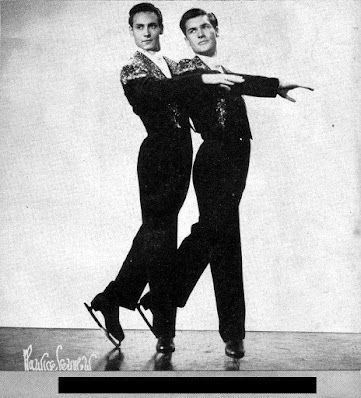
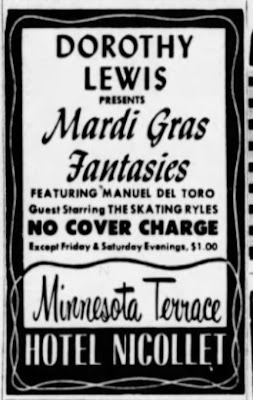

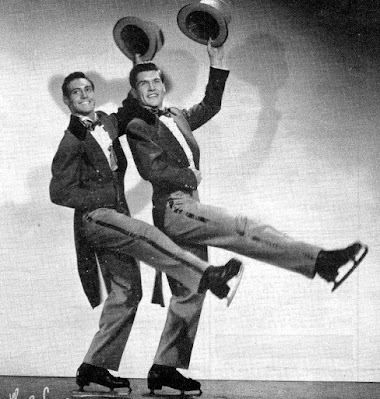














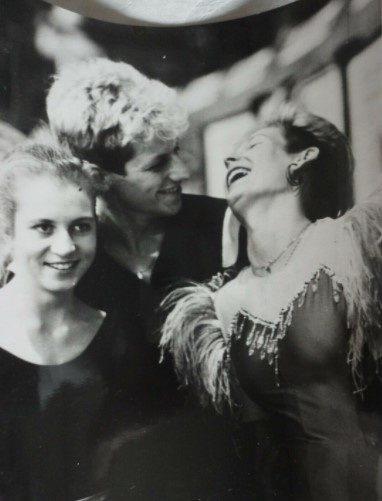

.png)

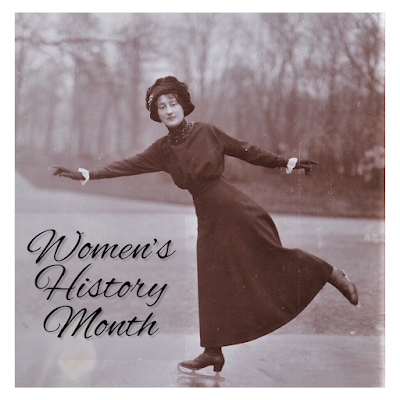

.png)
